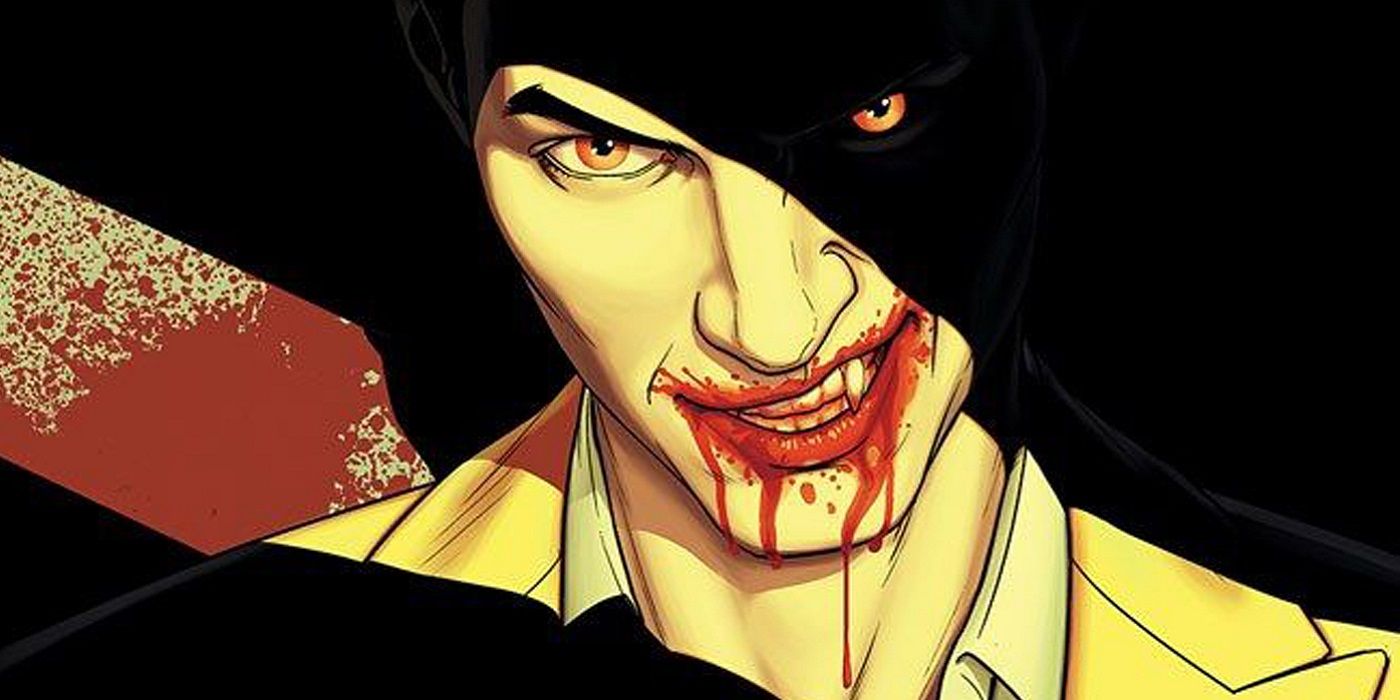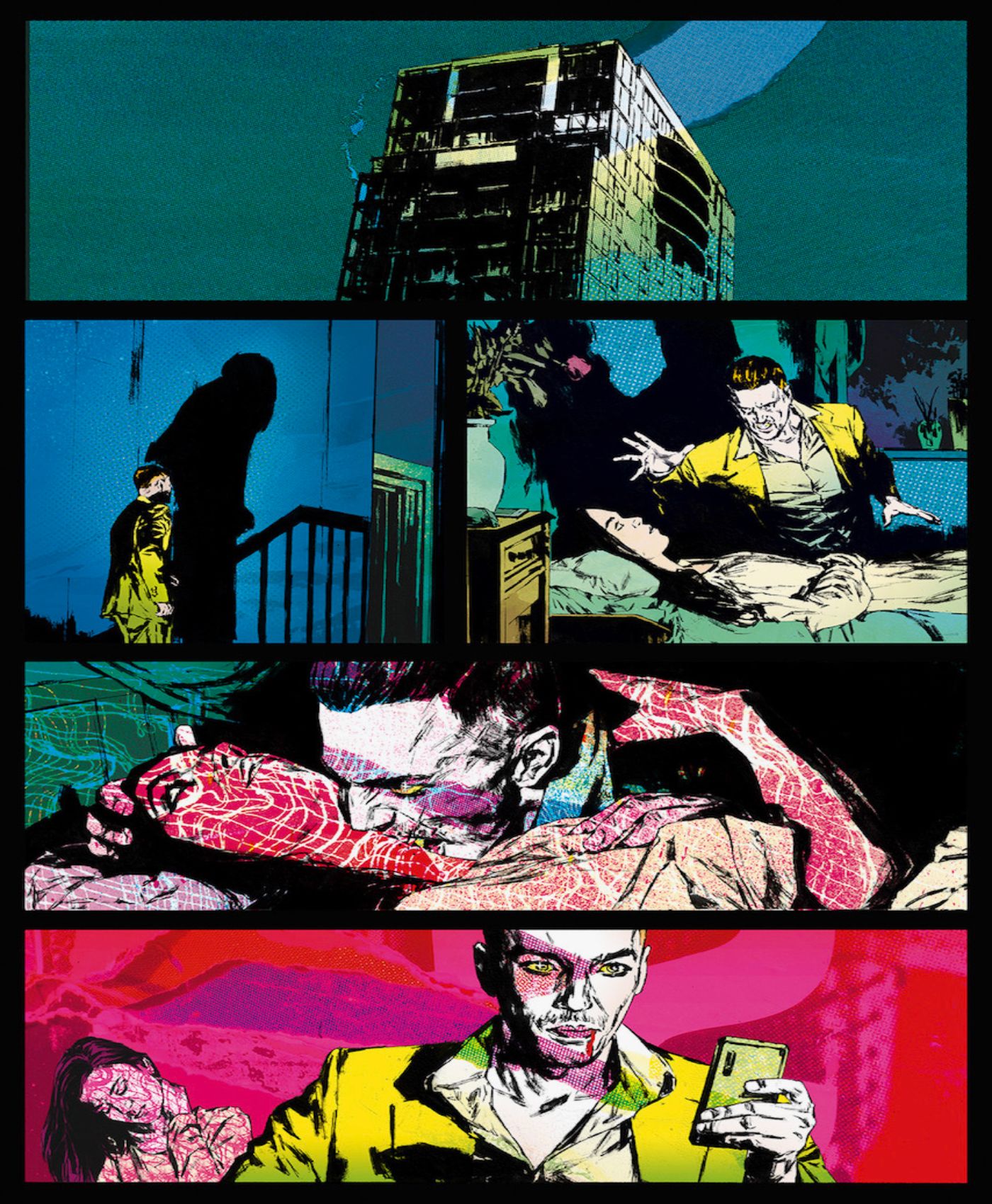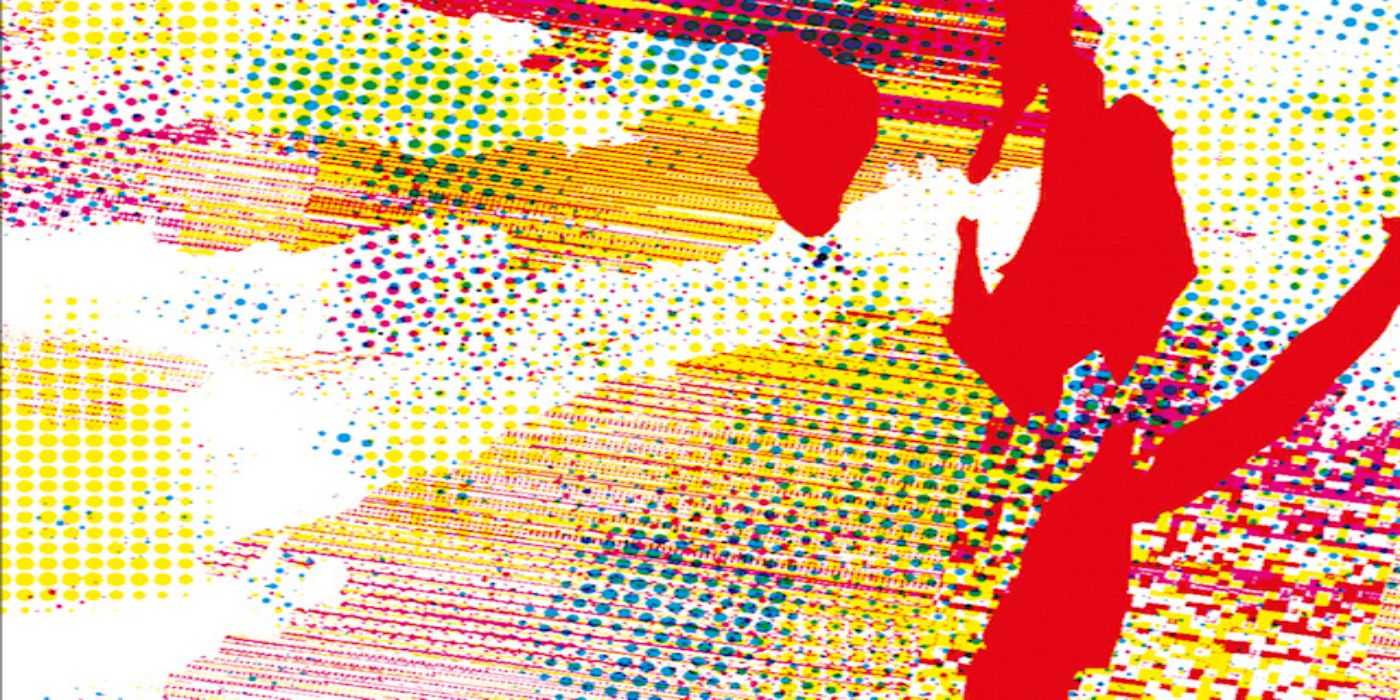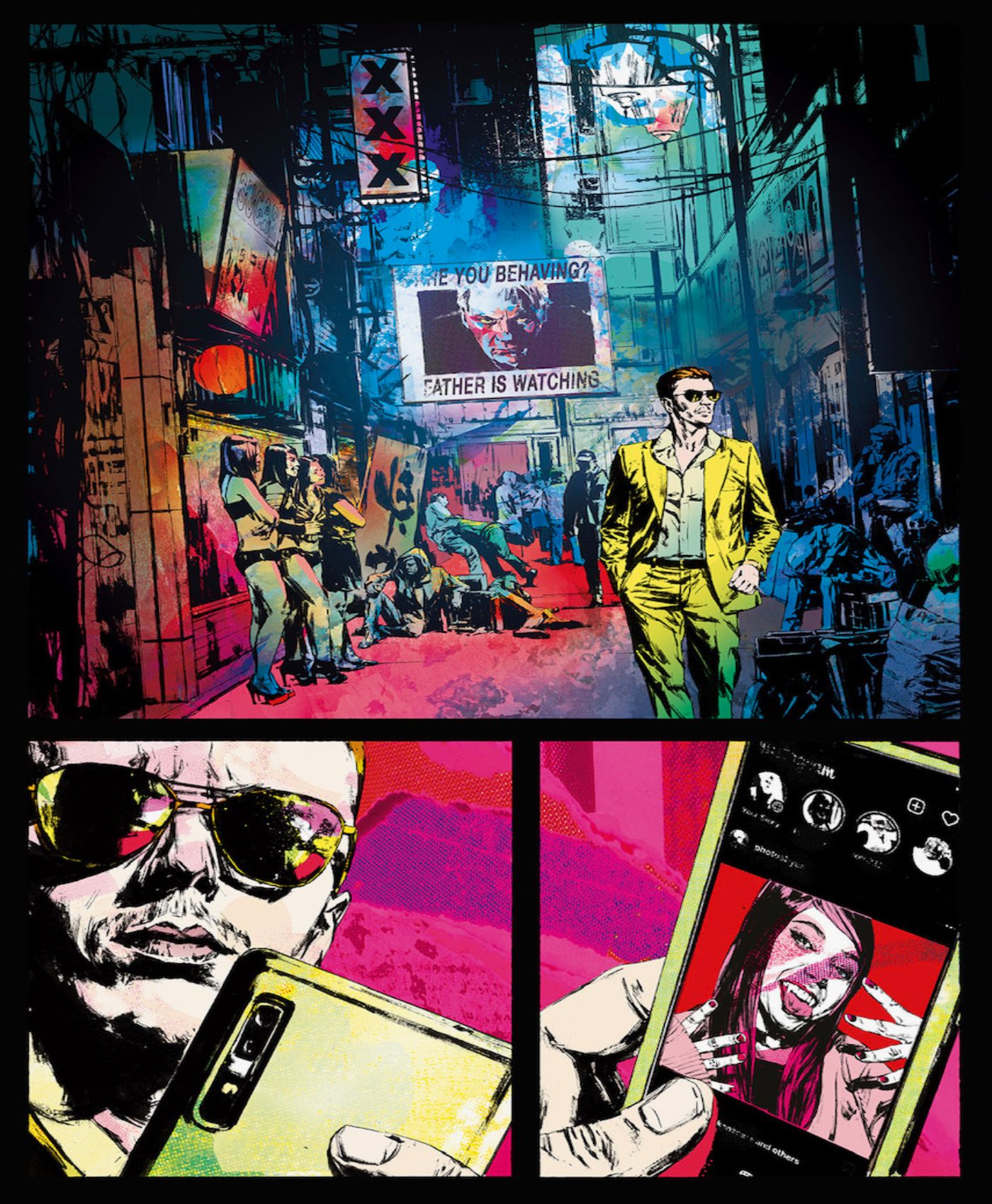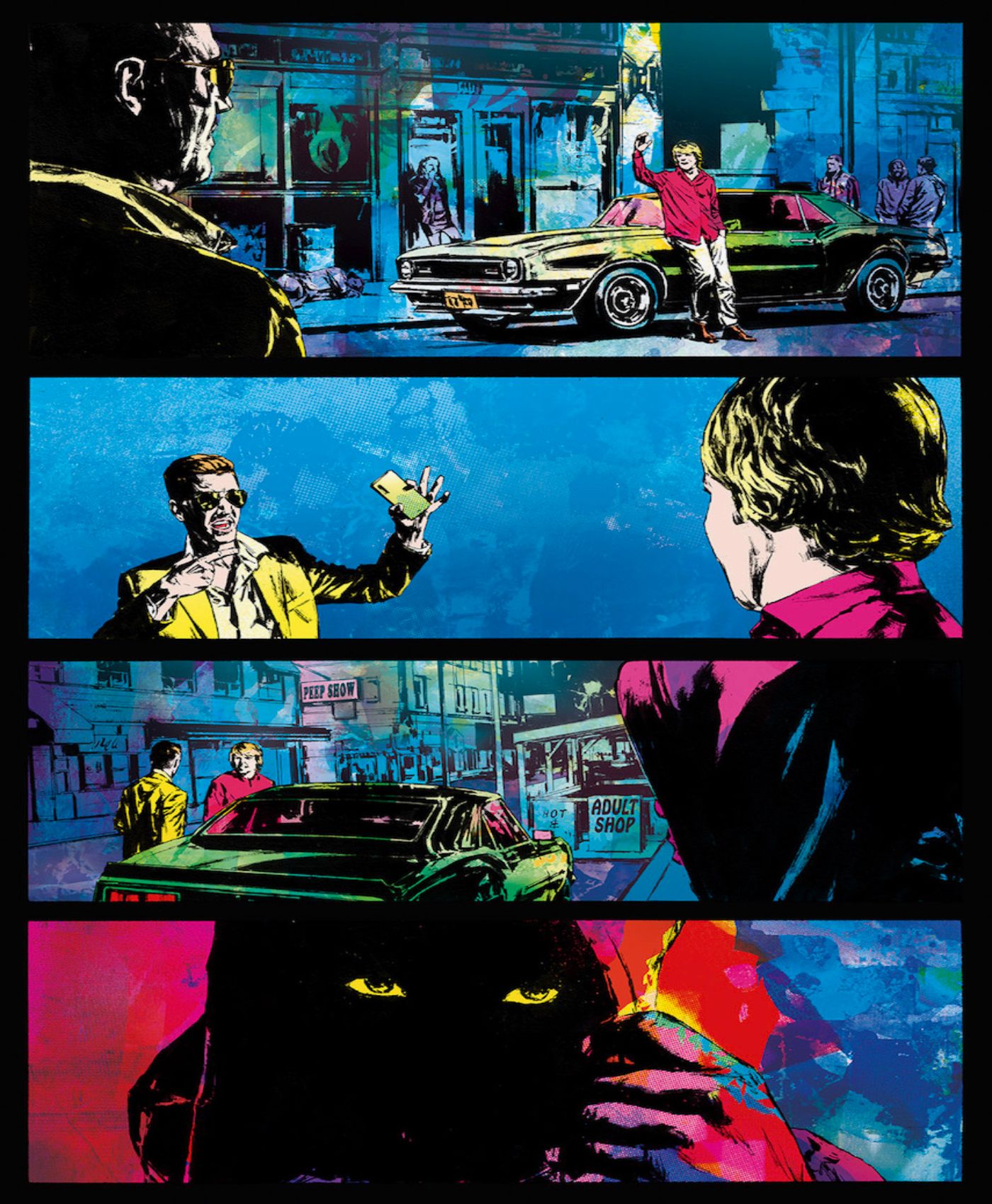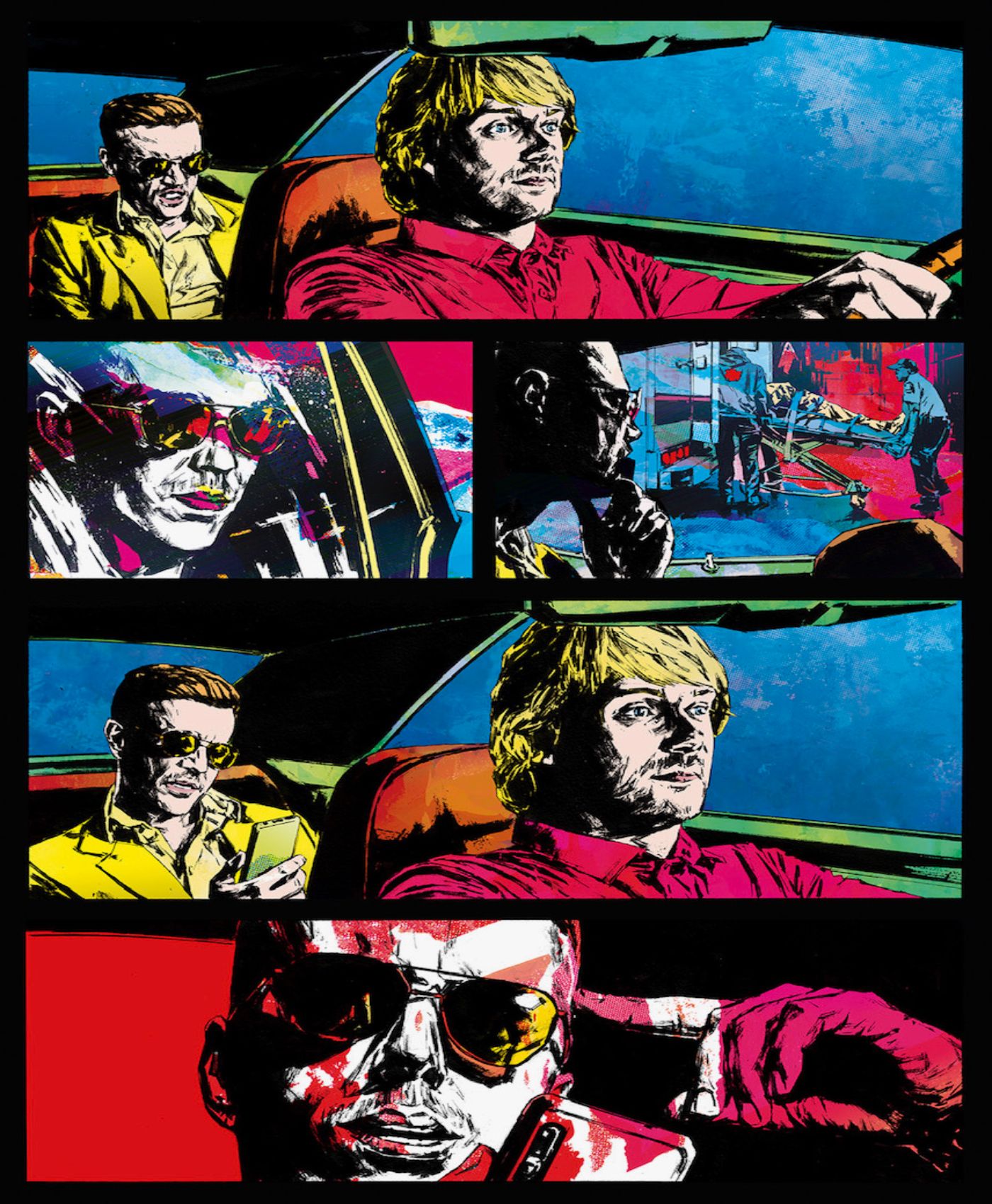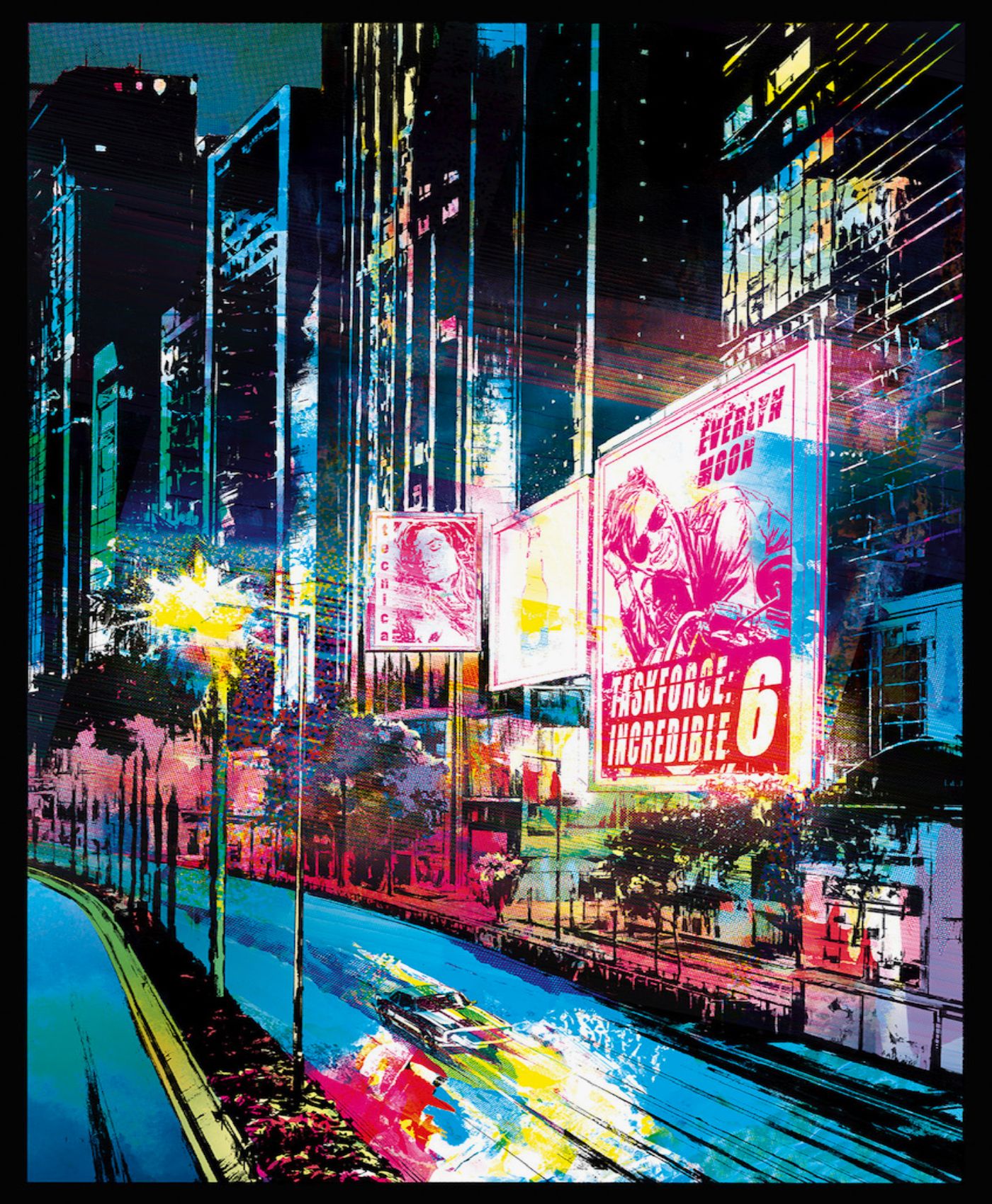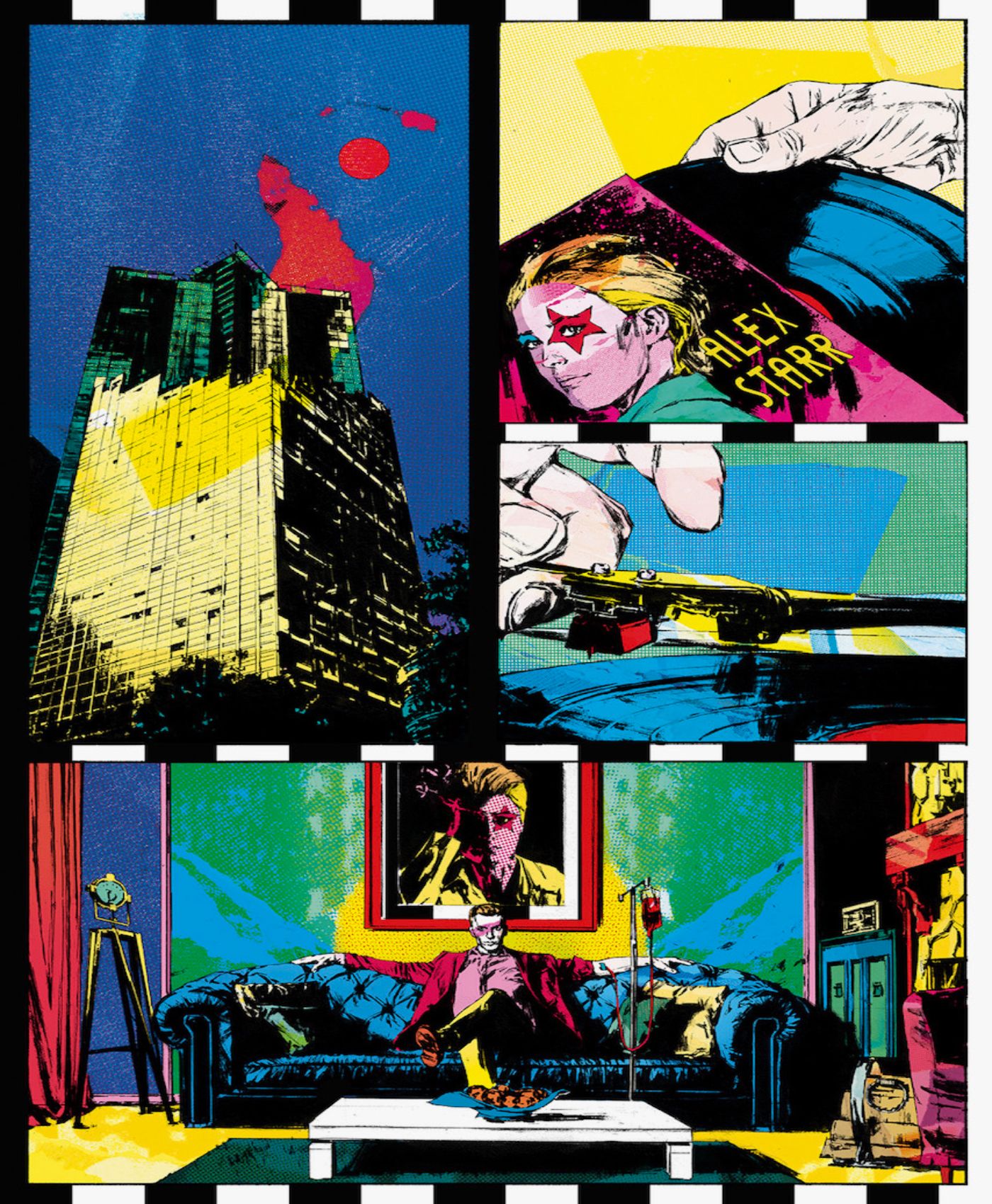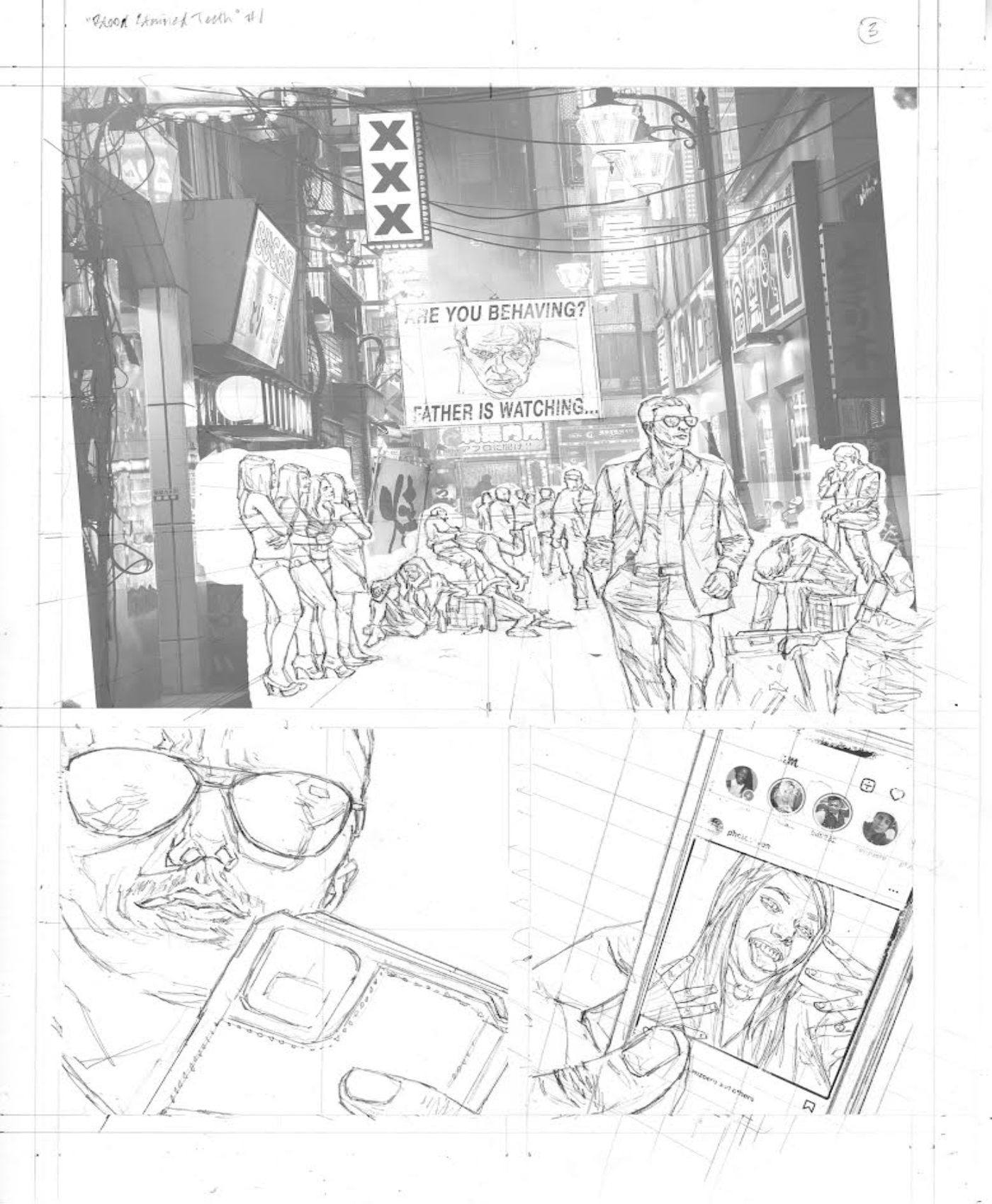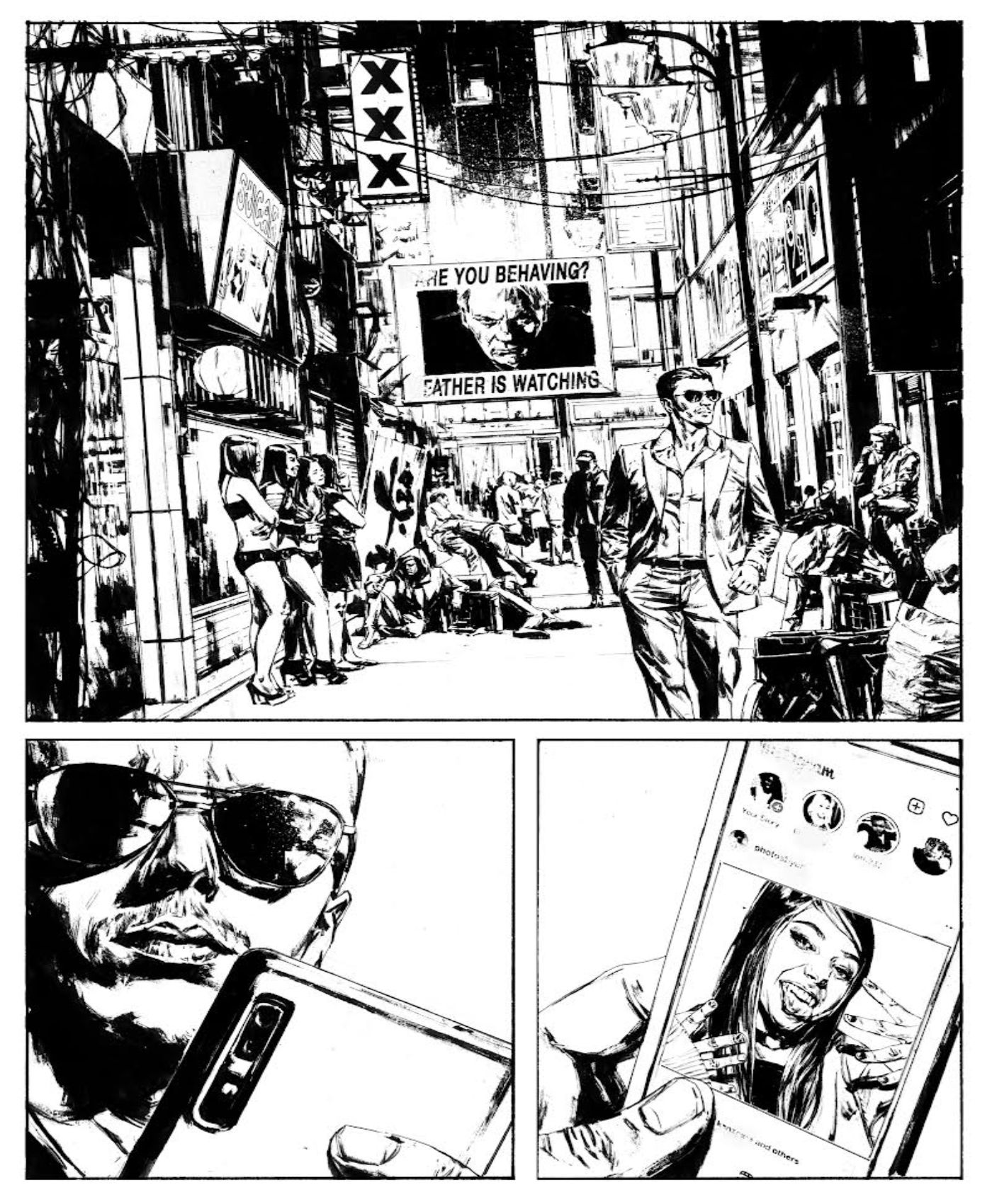Blood-Stained Teeth is a brand new series from Image Comics that will explore the seedy world of vampires, the class battles between them, and the lengths they'll go to make money. The unique spin on the genre from Christian Ward, Patric Reynolds, and Heather Moore is a fang-filled crime book with plenty of twists along the way.
We spoke to writer Christian Ward, artist Patric Reynolds, and colorist Heather Moore about bringing Blood-Stained Teeth to life, doing a new take on an oft-crowded genre, and flipping the idea of what a vampire book can be on its head. Check out our interview with the three talented creators below.
I read the first issue, and I really enjoyed it. Blood-Stained Teeth #1 is a really unique vampire story in a genre that's crowded sometimes. How did this project come to be, and what made Patrick the perfect artist for the series?
Christian Ward: Basically, this is a story that I had brewing for many years now. I had the main conceit of it, and initially it was going to be something that I was going to draw. It was going to be my first book that I was going to draw and write.
As I was working on my previous books, and over the course of the pandemic, certain themes were flying around in the ether. Everyone was having discussions about billionaires being more socially responsible and looking after everybody, and everyone was looking after everybody else. While that was going on, Jeff Bezos was basically sucking all of our money. He was getting bigger and bigger, like a tick, just leeching off all of us while we're all stuck indoors. And it just occurred to me that billionaires, essentially, are vampires. They're just taking drip, drip, drip from us all the time.
The more I thought about it, the angrier I got. And, obviously, good horror comes from anger. When I realized that the story would work better as a mirror to our world, that was when I realized that it wouldn't necessarily work with my art, which is more about escapism and fantasy. That's when I started to keep my eyes open for an artist that would bring a sense of reality to the story and help sell those themes and that discussion to the readers.
I was doing work at Dark Horse; I'd just done Machine Gun Wizards. My editor, Daniel Chabon, [and I] were basically chatting while we're working, and he was showing me an early PDF of I Pledge Allegiance To The Mask, which was by Christopher Cantwell and this gentleman here, Patric Reynolds. Patric's work is very cinematic, very moody; there's a lot of weight to it, there's a lot of color to it, and there's a lot of light to it. As soon as I saw the art, it just struck me that he was the perfect artist not only for vampire, but for this vampire book.
We started DMing, feeling each other around, and Patric really dug the idea. We got the thematics of it and got the weight of it. And we've been working on it for about a year now, so it's exciting to be able to finally talk about it, because you work on these things for so long before they're ever announced. We're very excited for the release next month. Or even sooner.
For you, Patric, what was so intriguing about creating this book with Christian?
Patric Reynolds: It was Christian friggin' Ward.
The best horror movies and stories that I know have very little to do with the actual monster. The monster's a catalyst for something else, like, the original black-and-white Night of The Living Dead is zombies, but there's also overtones of racism and paranoia and stuff like that.
I knew that Christian was a pretty good writer and was awesome, so I knew that if the concept was cool, I'd be totally fine with it. I would be totally cool letting him roll with it, because he's also a lot smarter than I am, and I'm kind of illiterate. So, I knew that if he has a great seed of an idea, we could do anything with it. And when he said, "Vampires, but billionaires," I was like, "Yeah!" Because that's kind of what they are.
Then we started shooting character designs back and forth and landed on our first vampire, Atticus Sloane. The character description said that he really likes David Bowie, and those 70s glam bands and music, so we eventually landed on his appearance being somewhere between David Bowie's Thin White Duke phase and Lucifer from The Wicked + The Divine. All the characters follow the same kind of pattern, but it was one of those things where I just wanted to keep thinking about and working on it.
It interested me so much that I had to actually pare my ideas down, just because it took me in so many different places and to so many different ideas. Because I was so excited about it, I had to focus a bit more on it. Which is a good sign because the story has its basic hook, but you'll see through the whole series that it actually can go so many different places. And it does, let me tell you. Especially the one I'm working on now, which goes just bonkers everywhere.
That's what I like about it: that the story can go places that are unexpected, but they have the potential to be incredibly memorable. I knew that Christian's visuals were incredible, so I knew that he also thought about the script like an artist does. That made it really easy to trust what he was doing and to be on board with the whole thing. It didn't take much convincing at all.
Heather, what was it like to work on this book? Patric's art style is very unique, and the colors and textures (seen below) you use are goregous. What was that experience like?
Heather Moore: Oh, thank you. I haven't worked with many artists before, so I was thrilled to have a chance to work with Patrick His style is, I think, pretty new for me to color. I was trying to approach this by basically bringing my abstraction and marrying that with his realism to draw forth a really gritty, tangible tension.
He takes a very realistic approach and, for me, it was all about bringing in tactility and having that basically create an unsettling sense. We are in the horror genre, but we're also making something quite wild and unique. I had in mind going with this sort of shredded pop art, which is obviously not what you would immediately think when you see Patric's line work. But it I think it fit quite well with the narrative.
It's just been really lovely, and I think the outcome surprised both of us.
What was it like telling this vampire story, but from the perspective of class dynamics?
Christian Ward: Class is a big thing here in the UK, and it's kind of tied to racism but it's also tied to the upper classes looking down on the middle class, and the middle class looking down on the lower class. There's a real hierarchy here that's very old, and we've never really let go of them. That's a weird reverse snobbery, kind of going the other way.
I wanted to look at the idea of that class structure with the vampires. You've got the First Borns, and then you've got the SIPs, who are created by the First Borns - often accidentally. Apart from our main character, whose vocation is to charge for that service of turning you into a vampire. The SIPs are looked down upon by the First Borns, and obviously that plays into it, as readers will find out. And then there's humans beneath them, because we're just cattle to the First Borns. We're there just to help them survive, really, both through our money and obviously through our blood.
I really wanted to just explore that hierarchy of snobbery; an almost kind of interspecies racism, which I thought would be quite an interesting way of looking at it. And without giving too much away, readers will see most of our First Borns are old white men strangely enough. Then the SIPs are a little bit more ethnically diverse, and obviously the humans are just us.
It's not necessarily about white supremacy, but it touches on some of that. It touches on what we see from real-life billionaires, and that idea of control over everything.
Patric Reynolds: When Christian introduced this story to me, I loved that overarching theme a lot. It's relevant in America too, because we're founded on capitalism here. I don't know if I've ever been paid enough for anything that I've done; I actually spent five years as a teacher, and I got paid little when I did that too. So, I've always been at odds with wealth and what it means to have it or not have it.
But what I wanted to do was take Christian's overarching themes, but also bring it down to a human level too. Make sure that, even though we have these broad themes, there's also things going on with our characters personally too - and that those broader themes affect what those characters think can do.
Our main character, Atticus Sloane, doesn't really belong anywhere. He's not really a First Born, he's not really a SIP; he's on his own and going rogue. But he doesn't really fit; he doesn't belong in the high society of vampires even though he has a lot of money. So, there's a conflict within him because all that he really has is his best friend, Joey. It's that character dynamic, that carries the emotional arc of the series.
I have to keep Christian's ideas in mind about wealth and wealth gaps, that kind of thing, but also try to take that and make sure the human conflict is also something that people can buy into as well. Because, like I mentioned before, the best horror movies - and the best movies in general - have really great themes, but they also they make you care about the characters. I care about Ripley in Alien, but I care about the choices that she has to make too.
That's something I try to keep in mind as well. I've got to make these people human, and I've got to make them - even though they're vampires -behave like they're human, and make people understand why. I make the readers feel for them, or at least identify in some way with them too.
Sometimes I spend a little too much time trying to figure out just how human to make these characters, and that's why I'm so slow, among other things. But once Christian's idea was out there, I was like, "This affects people too, but how does it do that?" And so, my mind went wild with how I could show that on the character's faces, which is something I love doing.
Heather Moore: I definitely try to bring that into the color work as well. One of the things that I was doing was exploring the hierarchy of the color wheel, and then seeing how that could operate as a visual representation of economic exploitation. I was thinking about primary colors and our First Borns, and like Christian and Patric have said about Sloane, he transitions through the hierarchy of the color wheel for me.
Another thing that I thought about was this idea of excess and accretion with textures and colors. Conceptually, we've talked about our cinematic approach to the book, so thinking about lighting and cinema, and how this accretion of light collapses into white. When you look at colored lights, they combine, and this whiteness does show up in the book with our First Borns in a pretty stark and antagonistic way.
The idea that Atticus Sloane is effectively turning people immortal in exchange for money is a really interesting play on vampires in general. Who is Atticus Sloane, and where are you hoping to take his story?
Christian Ward: Well, that would be spoilers, wouldn't it? [laughs]
Atticus is a grifter. When I was coming up with this whole thing, he was really inspired by the films of the Safdie brothers. I'd just watched Uncut Gems, and I really love that kind of antihero - though there's nothing heroic about the characters that they put in their films. They're just people in a pinball machine, and they go from one point to another to another to another, and they just have to survive.
Even though he's immortal, he shares more similarities with the human grifter trying to just survive. The hook of the book is "Immortality isn't cheap," and that's obviously because he's charging people to become immortal. There's a play on that, but it's also about how he's got to survive, so he's got to make a lot of money. And because he doesn't belong in the high society that he's rejected, and that has sort of rejected him - and we'll find out why later - he just has to grift and do this vamp for hire thing where he just goes about essentially selling his wares.
And Joey, his familiar, is almost like his pimp in many ways. He's there to help him facilitate this transaction, and it's what he needs to do just to survive and stay afloat. He has to constantly do it, because the money he goes through runs out really quickly.
What we're going to see in this series is basically what he will be forced to do to keep his head above water. And also, as you'll find out, other things will come into play that I can't really talk about.
You mentioned The Wicked + The Divine as inspiration, and I really got that sense as well. In imagining this character, what did you want to accomplish with him?
Christian Ward: I had this idea that he thinks he's really cool. Because vampires are immortal, time moves really slowly for him. He models himself on a superstar that's basically in the past - everyone loves Bowie, but it's a Bowie analog. It's not actually Bowie in the comic. And so, he thinks he's got swag and thinks he's cool, but he's kind of not.
He has this weird push-pull with human culture, because he hates humans - he has to. He's a vampire, and you're supposed to hate humans as a vampire. But there's this little bit of him that is kind of in love with the culture. One of the first times we see him in the book, he's putting on some vinyl. He's almost like an accidental hipster, which he can't kind of quite help.
But it's weird, because I write him as a bastard, but he's also a little bit of an idiot. He is smart, and he's trying to plan one step ahead, but he's constantly trying to get out of situations that he's put himself in the first place. So, it's this self-perpetuating cycle that he's trying to break that's his own fault, really.
Patric Reynolds: Yeah, he's sort of a guy cosplaying as a cool person. One of my favorite movies is The Talented Mr. Ripley. Spoiler alert: Matt Damon assumes the identity of his friend, Dickie Greenleaf. He knows how to forge his name, he knows how to assimilate his voice on the phone and listen to his music. But he doesn't really know him, so he decorates his apartment in these weird bourgeois rich things that he thinks a rich person is supposed to have. And it's not until their mutual friend comes over and notices that's not what Dickie would do that his bluff is called.
That's sort of how I think about Atticus Sloane. He thinks he's cool, he thinks he's smart, and he surrounds himself with a bunch of cool stuff. But he has no idea how to be a person; he just knows that this is probably gonna make him look a lot cooler than he is.
Through the course of the series, he actually does figure out that's what a person would do, and that's what a person would feel. And that's why I think he becomes a really cool and compelling character, because he sloughs up all the cosplay and all the cool stuff to actually be a person and make human decisions instead of just make money.
I really appreciate that concept from Christian. He understands that it starts somewhere, and you can make a character look cool, but what's the get? Why? And at the end, you figure out that it's because he came from this place, and now he's ended up here being an actual person.
Christian Ward: Although he's still an asshole.
Patric Reynolds: At least he tries. He makes an attempt.
What was it like to play with the perception of vampires and introduce them through this marriage of realism and fantasy?
Christian Ward: I think it comes from the love of the lore. I love vampires, and the thing with vampires is they're so flexible. You've got this character over who's a vampire, and they've been in so many different films, TV shows, cartoons, comics and novels - and each one's slightly different. Each one's their own little take on the vampire mythos.
I wanted to honor all of that. And as we go through the issues, there's definitely going to be winks to specific things that we're going to be playing at. That'll be a link to this, this will be a link for that.
But once I had the hierarchy, and once I understood the rules of the world and the rules of how our vampires would behave and function, it was easy to say, "How does this classic element apply?"
There's one thing I'm writing at the moment, which these two guys don't know yet. It's only mild spoilers, but we're gonna have a sequence with garlic in one of the future issues. And I thought, "Will garlic kill them?" I was like, "Well, no, but it's still toxic to them." Maybe they chew it, in the same way that we would take drugs or consume alcohol, and that's how they get a garlic high level. They're chewing garlic and get a little bit of a stinky high.
A lot of it is just having fun with it. I know we've talked about how it's about billionaires, which is a bit serious, and it's about social care. As you'll see from the first issue, there's a big thing about health care that runs through it, which I'm very passionate about. That becomes a big broad theme, but nobody wants to read a book and feel like they're being lectured to. We've got to have fun with it, so it's taking these tropes and just turning them on their head.
I've always believed that world-building is really important. but world-building is not a story. The story is when you break the world that you've built, so that's kind of the approach. You're building the world and breaking it, and that's where the story comes from.
Christian, how did your experience as an artist help you navigate your writer role from the other side? What's it like to step away from the art more than you're used to and trust the talents of Patric and Heather?
Christian Ward: Basically, you have to. I know, as an artist, there's nothing worse than when you get a script from a writer who is breathing down your neck and going, "Do this that way and do that this way." You don't do your best work that way.
I've always known that as an artist, so I just apply that as a writer. I know there's some things that I personally don't like, so I apply those to my scripts so that Patric - and previously Sami - hopefully get scripts where they feel like they can be their own artist and their own person.
But in regards to the your question about trust, it comes down to the initial choice and the initial selection. Once I've chosen - in this case, Patric and Heather - that's the hard part done. That's it, then; we go. Because I know at that point that I've chosen the right people for the job, who will do their best work, and I can just trust them to do their best work.
And part of the pleasure is for me to send the script out. If I wanted to know what it was gonna look like, I'd draw it myself. The pleasure is sending it out there and not knowing exactly what I'm going to get back. There's a magic to it; there really is. Being an artist, I can draw my own stuff, but it doesn't negate the pure rush of when I open an email and see a scene I've written in such an unexpected way. It's an absolute honor, and I'm thrilled just to be working with such talented artists as Heather and Patric.
Every day I say to them, they are Blood-Stained Teeth. They're my secret weapons for this. Once I've written the script, that's my effort done and I can sit back. Often, Patric will send pages in and be like, "What are the notes?" And there might be a few little things where I've not been as clear as I needed to be in regards to [a detail] that's important from a plot point of view or a character's point of view. But, by and large, I say, "You do you." I just sit back and enjoy.
For Patric and Heather, what was the collaborative process like of working with Christian as a writer while knowing he's so prominently known as an artist?
Heather Moore: It's been incredible. Just to echo what Christian said, he is an artist so he has an understanding of the collaborative process. And he's been in the industry for so long already. He is wonderful to work with, giving us the space to explore and telling us to get experimental. He's really not putting any reins on the expectation.
Like he said, we've really just had so much fun. I think we're all just very passionate about what we do and about our work together.
Patric Reynolds: When Christian introduced the projects to and said he wanted to be experimental, I was like, "Okay, that sounds cool." I kind of had an idea of what he might have meant, because I'd seen Christian's work on ODY-C, Invisible Kingdom and Black Bolt. I had an idea of what he was talking about.
But when I saw Heather's colors, I was like, "Oh, by experimental, he means he's going to tear through the fabric of space-time in and of itself. That's what he means" And the thing is, most of the colorists I've worked with have been phenomenal colorists. But if you look at the work I've done, it's more realistic, and they color it in response to that and try to add nuance to the reality that the inks and line work already create.
Heather's colors do that, but they also add another layer of reality and meaning to it. They're literally breaking the picture plane with patterns to denote an emotional moment or character, or they're literally tearing through the visual space. The colors become a personality in and of themselves, and they exist not only with the world that that I drew, but also on their own.
When you see a Vincent van Gogh painting for the first time up close, you get immersed in the reality of looking at a vase full of sunflowers on a table. But if you look really close, you can see the textures and the brush strokes, and the dirt that's in the canvas. The actual physical thing becomes a reality in and of itself, so you get immersed in just the thing itself. When I see Heather's colors, it's coloring the world, but it's also like a second lead singer in a band. They have their voice too, and they also add that that layer of meaning to everything that elevates it beyond what I think is a normal comic or a comic that I may have seen before.
I feel bad giving Heather any notes. It's like telling the cosmos to stop letting the stars come out. Like, "Can you make her dress more purple?" I feel like a weirdo telling her how to do her job sometimes. When I look at it like that, I'm like, "Okay, there's more meaning here than just typical coloring." There is a layer of stuff that becomes itself, if that makes any sense.
What do you hope readers get from this book, and how excited are you guys to have it come out?
Christian Ward: I hope I can speak for us all that we're really excited. I've been working for almost 15 years, and I've never been as excited about a book before.
And what I hope they get? A thrill ride that they don't expect.
Heather Moore: I feel exactly the same. I hope that people see something new. I'm trying to take the table and throw it over. I've just loved working with these two so much, and that's my own takeaway: the process and collaboration itself.
Patric Reynolds: After everything, I hope that people see how much we've enjoyed doing this. To see how enthusiastic we are about it, but also how meaningful it is for us to.
I really want people to think about how it's not only about vampires too. Some of the greatest comics you've ever read change the way you perceive the world. When I first read Arkham Asylum by Dave McKean and Grant Morrison, it changed the way I saw comics.
I hope that when people read this, they'll think differently about something in their life: wealth, loneliness, isolation, something. How to perceive color, even. I hope that when people read this, their outlook on how they view things will change.
Thank you so much to Christian Ward, Heather Moore, and Patric Reynolds for taking the time to speak with us. Blood-Stained Teeth #1. The Final Order Cut Off is today, while the series arrives in comic book stores on April 27, 2022.

